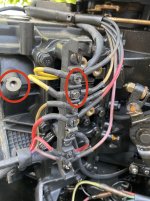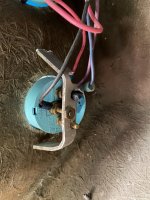Hello all, first timer here with a question on my 1992 Johnson 90HP outboard, model TJ90TLEND.
First off, since I bought the boat in December, the Tach and Fuel gauges have intermittently not worked… would just go down to 0 RPM and fuel showing empty.
Other than that boat ran great. Maybe an occasional low speed stall…. Until yesterday:
Trimmed motor down to back off trailer, and once underway noticed trim no longer working. Got to fishing spot and realized the motor wouldn’t start back up either. Ended up bypassing starter solenoid to fire up motor and get back to ramp.
Today, noticed the main 20Amp in-line fuse blown. Replaced fuse, ran the trim motor for a couple seconds and it blew. Replaced once more and it blew before I touched anything… just had the key in on position Is all.
I’m thinking possible bad rectifier? Or stator? Any help is appreciated, and I’ll provide any more info if needed. Thanks!
First off, since I bought the boat in December, the Tach and Fuel gauges have intermittently not worked… would just go down to 0 RPM and fuel showing empty.
Other than that boat ran great. Maybe an occasional low speed stall…. Until yesterday:
Trimmed motor down to back off trailer, and once underway noticed trim no longer working. Got to fishing spot and realized the motor wouldn’t start back up either. Ended up bypassing starter solenoid to fire up motor and get back to ramp.
Today, noticed the main 20Amp in-line fuse blown. Replaced fuse, ran the trim motor for a couple seconds and it blew. Replaced once more and it blew before I touched anything… just had the key in on position Is all.
I’m thinking possible bad rectifier? Or stator? Any help is appreciated, and I’ll provide any more info if needed. Thanks!






















